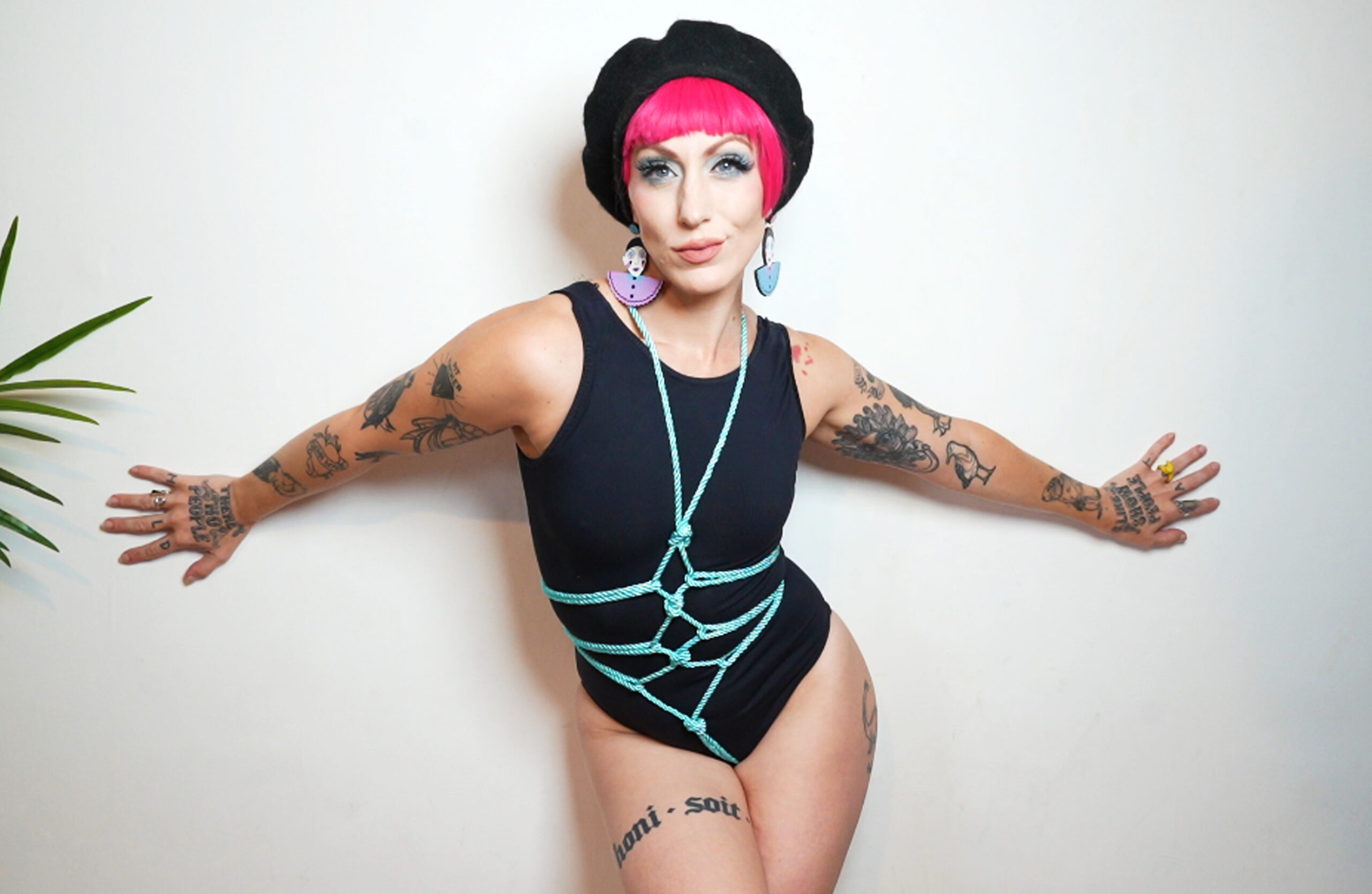What It Means To Be Demigender And How To Support A Partner

Understanding Demigender Identity
Demigender identity exists on a spectrum, recognizing individuals who partially identify with one gender while also experiencing another. Understanding this complexity goes beyond simple labels; it’s about acknowledging the nuances of someone’s internal experience and respecting their chosen expression. This exploration delves into the meaning behind demigender identities and provides guidance on how to be a supportive partner to someone navigating this aspect of themselves.
Defining Demigender
Demigender is an umbrella term encompassing various gender identities where individuals partially identify with one gender while also feeling a connection to another. This can manifest in diverse ways, with some individuals feeling more strongly aligned with one gender over the other, while others experience a more balanced sense of both.
It’s crucial to understand that demigender identities are not fixed or absolute; they can evolve and shift over time. Someone might identify as demigirl one day and feel more aligned with demiboy another. This fluidity reflects the complex nature of gender identity and highlights the importance of open communication and respect.
Supporting a partner who is demigender involves creating a safe space for them to explore their identity without judgment. Actively listening to their experiences, validating their feelings, and using their preferred pronouns are fundamental steps in showing your support. Remember that everyone’s journey with gender is unique, so approaching this conversation with empathy and understanding will go a long way.
Variations of Demigender Identity
Demigender encompasses a range of identities where individuals partially identify with one gender while feeling a connection to another. For instance, someone might identify as demigirl, meaning they partly identify as female but not fully. Similarly, demiboy refers to someone who partly identifies as male.
It’s important to recognize that these identities exist on a spectrum. Some individuals may feel a stronger connection to one gender over the other, while others experience a more balanced sense of both. Demigender identities can also evolve and change over time as individuals learn more about themselves.
Supporting a demigender partner involves creating an environment where they feel safe to express themselves authentically. This includes using their correct pronouns, respecting their chosen gender expression, and being open to learning more about their experiences. Remember that communication is key; encourage them to share their feelings and perspectives, and listen attentively without judgment.
The Spectrum of Gender Identity
Demigender identity exists on a spectrum, recognizing individuals who partially identify with one gender while also experiencing another. Understanding this complexity goes beyond simple labels; it’s about acknowledging the nuances of someone’s internal experience and respecting their chosen expression. This exploration delves into the meaning behind demigender identities and provides guidance on how to be a supportive partner to someone navigating this aspect of themselves.
Demigender is an umbrella term encompassing various gender identities where individuals partially identify with one gender while feeling a connection to another. This can manifest in diverse ways, with some individuals feeling more strongly aligned with one gender over the other, while others experience a more balanced sense of both.
It’s crucial to understand that demigender identities are not fixed or absolute; they can evolve and shift over time. Someone might identify as demigirl one day and feel more aligned with demiboy another. This fluidity reflects the complex nature of gender identity and highlights the importance of open communication and respect.
Supporting a partner who is demigender involves creating a safe space for them to explore their identity without judgment. Actively listening to their experiences, validating their feelings, and using their preferred pronouns are fundamental steps in showing your support. Remember that everyone’s journey with gender is unique, so approaching this conversation with empathy and understanding will go a long way.
Demigender encompasses a range of identities where individuals partially identify with one gender while feeling a connection to another. For instance, someone might identify as demigirl, meaning they partly identify as female but not fully. Similarly, demiboy refers to someone who partly identifies as male.
It’s important to recognize that these identities exist on a spectrum. Some individuals may feel a stronger connection to one gender over the other, while others experience a more balanced sense of both. Demigender identities can also evolve and change over time as individuals learn more about themselves.
Supporting a demigender partner involves creating an environment where they feel safe to express themselves authentically. This includes using their correct pronouns, respecting their chosen gender expression, and being open to learning more about their experiences. Remember that communication is key; encourage them to share their feelings and perspectives, and listen attentively without judgment. pecker sweets
Supporting a Demigender Partner
Demigender identities exist on a spectrum, acknowledging individuals who partially identify with one gender while also experiencing another. This can manifest in diverse ways, with some feeling a stronger connection to one gender over the other, while others experience a more balanced sense of both. Understanding this complexity goes beyond simple labels; it’s about recognizing the nuances of someone’s internal experience and respecting their chosen expression.
Respecting Pronouns and Names
Demigender identities exist on a spectrum, acknowledging individuals who partially identify with one gender while also experiencing another. This can manifest in diverse ways, with some feeling a stronger connection to one gender over the other, while others experience a more balanced sense of both. Understanding this complexity goes beyond simple labels; it’s about recognizing the nuances of someone’s internal experience and respecting their chosen expression.
- Use Correct Pronouns: Pay attention to your partner’s preferred pronouns (he/him, she/her, they/them, or others) and use them consistently.
- Respect Chosen Names: If your partner has chosen a name that reflects their gender identity, use it respectfully.
- Listen and Learn: Be open to learning about their experiences and what being demigender means to them.
- Create a Safe Space: Make sure they feel comfortable sharing their feelings and expressing themselves without fear of judgment.
- Validate Their Feelings: Acknowledge and validate their emotions, even if you don’t fully understand them.
Using Affirming Language
Demigender identity exists on a spectrum, recognizing individuals who partially identify with one gender while also experiencing another. This can manifest in diverse ways, with some feeling a stronger connection to one gender over the other, while others experience a more balanced sense of both. Understanding this complexity goes beyond simple labels; it’s about recognizing the nuances of someone’s internal experience and respecting their chosen expression.
Demigender identities exist on a spectrum, acknowledging individuals who partially identify with one gender while also experiencing another. This can manifest in diverse ways, with some feeling a stronger connection to one gender over the other, while others experience a more balanced sense of both. Understanding this complexity goes beyond simple labels; it’s about recognizing the nuances of someone’s internal experience and respecting their chosen expression.
- Use Correct Pronouns: Pay attention to your partner’s preferred pronouns (he/him, she/her, they/them, or others) and use them consistently.
- Respect Chosen Names: If your partner has chosen a name that reflects their gender identity, use it respectfully.
- Listen and Learn: Be open to learning about their experiences and what being demigender means to them.
- Create a Safe Space: Make sure they feel comfortable sharing their feelings and expressing themselves without fear of judgment.
- Validate Their Feelings: Acknowledge and validate their emotions, even if you don’t fully understand them.
Educating Yourself About Demigender Experiences
Demigender identity exists on a spectrum, recognizing individuals who partially identify with one gender while also experiencing another. This can manifest in diverse ways, with some feeling a stronger connection to one gender over the other, while others experience a more balanced sense of both. Understanding this complexity goes beyond simple labels; it’s about recognizing the nuances of someone’s internal experience and respecting their chosen expression.
Demigender is an umbrella term encompassing various gender identities where individuals partially identify with one gender while feeling a connection to another. This can manifest in diverse ways, with some individuals feeling more strongly aligned with one gender over the other, while others experience a more balanced sense of both.
It’s crucial to understand that demigender identities are not fixed or absolute; they can evolve and shift over time. Someone might identify as demigirl one day and feel more aligned with demiboy another. This fluidity reflects the complex nature of gender identity and highlights the importance of open communication and respect.
Supporting a partner who is demigender involves creating a safe space for them to explore their identity without judgment. Actively listening to their experiences, validating their feelings, and using their preferred pronouns are fundamental steps in showing your support. Remember that everyone’s journey with gender is unique, so approaching this conversation with empathy and understanding will go a long way.
Demigender encompasses a range of identities where individuals partially identify with one gender while feeling a connection to another. For instance, someone might identify as demigirl, meaning they partly identify as female but not fully. Similarly, demiboy refers to someone who partly identifies as male.
It’s important to recognize that these identities exist on a spectrum. Some individuals may feel a stronger connection to one gender over the other, while others experience a more balanced sense of both. Demigender identities can also evolve and change over time as individuals learn more about themselves.
Supporting a demigender partner involves creating an environment where they feel safe to express themselves authentically. This includes using their correct pronouns, respecting their chosen gender expression, and being open to learning more about their experiences. Remember that communication is key; encourage them to share their feelings and perspectives, and listen attentively without judgment.
- Use Correct Pronouns: Pay attention to your partner’s preferred pronouns (he/him, she/her, they/them, or others) and use them consistently.
- Respect Chosen Names: If your partner has chosen a name that reflects their gender identity, use it respectfully.
- Listen and Learn: Be open to learning about their experiences and what being demigender means to them.
- Create a Safe Space: Make sure they feel comfortable sharing their feelings and expressing themselves without fear of judgment.
- Validate Their Feelings: Acknowledge and validate their emotions, even if you don’t fully understand them.
Creating a Safe and Supportive Environment
Demigender identity exists on a spectrum, recognizing individuals who partially identify with one gender while also experiencing another. This can manifest in diverse ways, with some feeling a stronger connection to one gender over the other, while others experience a more balanced sense of both. Understanding this complexity goes beyond simple labels; it’s about recognizing the nuances of someone’s internal experience and respecting their chosen expression.
Demigender identities exist on a spectrum, acknowledging individuals who partially identify with one gender while also experiencing another. This can manifest in diverse ways, with some feeling a stronger connection to one gender over the other, while others experience a more balanced sense of both. Understanding this complexity goes beyond simple labels; it’s about recognizing the nuances of someone’s internal experience and respecting their chosen expression.
- Use Correct Pronouns: Pay attention to your partner’s preferred pronouns (he/him, she/her, they/them, or others) and use them consistently.
- Respect Chosen Names: If your partner has chosen a name that reflects their gender identity, use it respectfully.
- Listen and Learn: Be open to learning about their experiences and what being demigender means to them.
- Create a Safe Space: Make sure they feel comfortable sharing their feelings and expressing themselves without fear of judgment.
- Validate Their Feelings: Acknowledge and validate their emotions, even if you don’t fully understand them.
Listening and Validating Their Feelings
Demigender identity exists on a spectrum, recognizing individuals who partially identify with one gender while also experiencing another. This can manifest in diverse ways, with some feeling a stronger connection to one gender over the other, while others experience a more balanced sense of both. Understanding this complexity goes beyond simple labels; it’s about recognizing the nuances of someone’s internal experience and respecting their chosen expression.
Demigender is an umbrella term encompassing various gender identities where individuals partially identify with one gender while feeling a connection to another. This can manifest in diverse ways, with some individuals feeling more strongly aligned with one gender over the other, while others experience a more balanced sense of both.
It’s crucial to understand that demigender identities are not fixed or absolute; they can evolve and shift over time. Someone might identify as demigirl one day and feel more aligned with demiboy another. This fluidity reflects the complex nature of gender identity and highlights the importance of open communication and respect.

Supporting a partner who is demigender involves creating a safe space for them to explore their identity without judgment. Actively listening to their experiences, validating their feelings, and using their preferred pronouns are fundamental steps in showing your support. Remember that everyone’s journey with gender is unique, so approaching this conversation with empathy and understanding will go a long way.

- Listen Attentively: Pay close attention when your partner talks monkey style sex position about their gender identity and experiences. Avoid interrupting or offering unsolicited advice unless they ask for it.
- Use Correct Pronouns: Ask your partner what pronouns they use and make an effort to use them consistently. If you make a mistake, apologize sincerely and correct yourself.
- Respect Their Choices: Support their decisions about their gender expression, whether it’s clothing, hairstyle, or name.
- Educate Yourself: Take the time to learn more about demigender identities from reputable sources. Understanding their experiences will help you be a better ally.
- Create a Safe Space: Let your partner know that you are there for them unconditionally and that they can share anything with you without fear of judgment.
A Glossy Life Blog
Thstrm
- Can CBD Gummy Sweets Help With Depression - September 15, 2025
- Brow Lift Treatment Near Cranleigh, Surrey - September 14, 2025
- Botox For Tired Eyes In Kenley, Surrey - September 13, 2025
